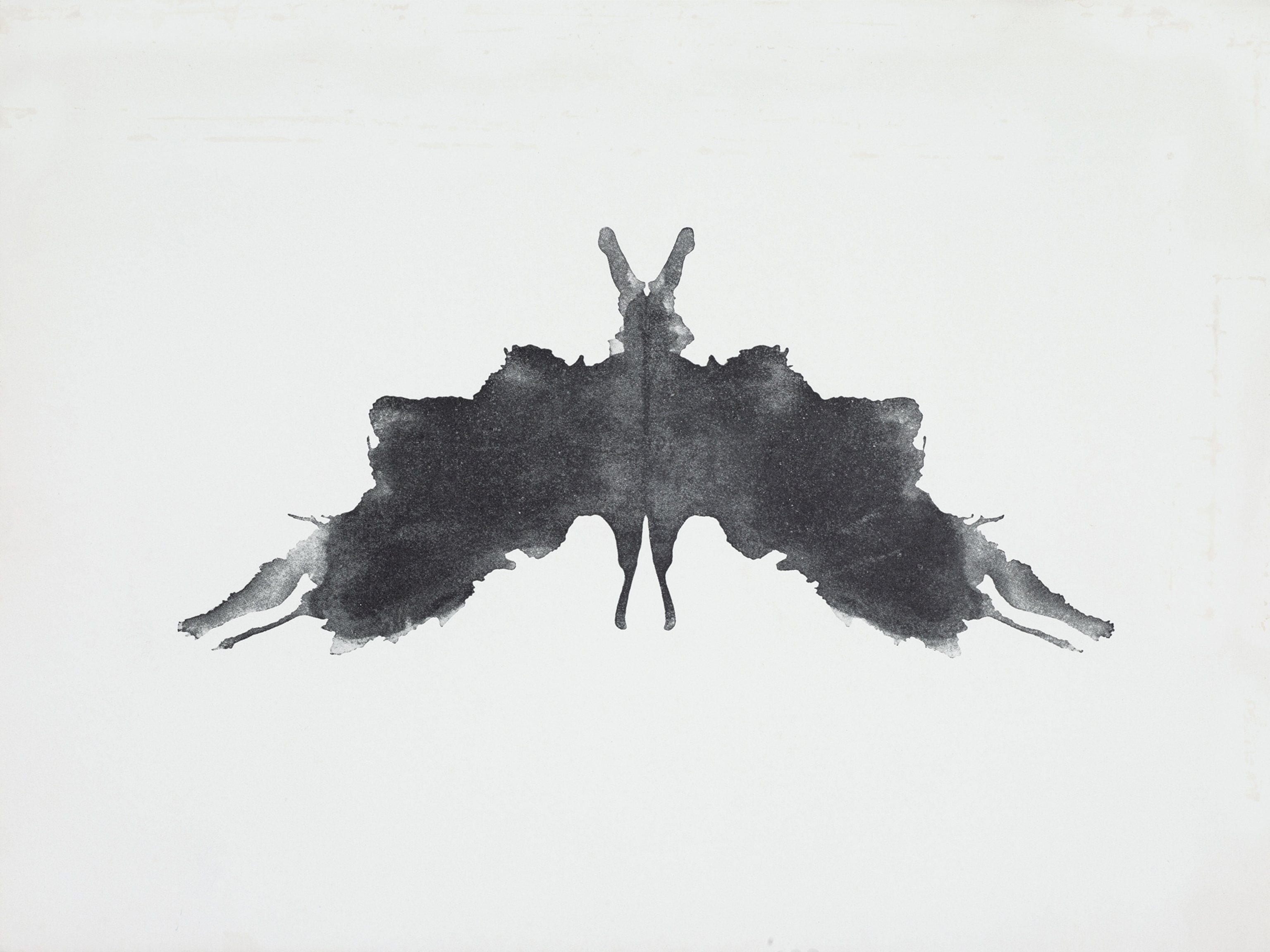



The Rorschach Test Is More Accurate Than You Think
100 years after the inkblots were created, studies show they reveal something about us.
In a small town in Switzerland in 1917, psychiatrist Hermann Rorschach began carefully splattering paint on cards to study how the mind works. Asking people what they saw, he observed a correlation in responses from patients with schizophrenia and theorized that mental health could be assessed by how someone processes visual information.
Rorschach’s original 10 images were published in 1921, the year before his death. After being brought to Chicago, they spread quickly across the United States as a popular personality test. In the second half of the century, trends like Freudian analysis fell out of favor, and the test became a synonym for pseudoscience. Critics called for a moratorium on its use. But a major 2013 study published by the American Psychological Association found it more effective than previously believed in diagnosing mental illness.
The Rorschach cards and the order in which they’re presented to patients have never changed. To preserve their utility as a diagnostic tool, psychologists don’t want them shown outside a clinical setting. That’s a challenge Damion Searls faced as he wrote The Inkblots, the first biography of Rorschach. He chose to publish a few, as we are doing here.
Regardless of the scientific debate, the Rorschach test has left its mark on American culture. The 10 blots are probably the “most analyzed paintings of the 20th century,” says Searls.
Spoiler alert: inkblot identities
Rorschach’s test is meant to reveal how a person processes information. There are no wrong answers, but responses that are very unusual are thought to reflect possible psychological issues. Common imagery seen in the blots:




Related Topics
You May Also Like
Go Further
Animals
- This ‘saber-toothed’ salmon wasn’t quite what we thoughtThis ‘saber-toothed’ salmon wasn’t quite what we thought
- Why this rhino-zebra friendship makes perfect senseWhy this rhino-zebra friendship makes perfect sense
- When did bioluminescence evolve? It’s older than we thought.When did bioluminescence evolve? It’s older than we thought.
- Soy, skim … spider. Are any of these technically milk?Soy, skim … spider. Are any of these technically milk?
- This pristine piece of the Amazon shows nature’s resilienceThis pristine piece of the Amazon shows nature’s resilience
Environment
- This pristine piece of the Amazon shows nature’s resilienceThis pristine piece of the Amazon shows nature’s resilience
- Listen to 30 years of climate change transformed into haunting musicListen to 30 years of climate change transformed into haunting music
- This ancient society tried to stop El Niño—with child sacrificeThis ancient society tried to stop El Niño—with child sacrifice
- U.S. plans to clean its drinking water. What does that mean?U.S. plans to clean its drinking water. What does that mean?
History & Culture
- Meet the original members of the tortured poets departmentMeet the original members of the tortured poets department
- Séances at the White House? Why these first ladies turned to the occultSéances at the White House? Why these first ladies turned to the occult
- Gambling is everywhere now. When is that a problem?Gambling is everywhere now. When is that a problem?
- Beauty is pain—at least it was in 17th-century SpainBeauty is pain—at least it was in 17th-century Spain
- The real spies who inspired ‘The Ministry of Ungentlemanly Warfare’The real spies who inspired ‘The Ministry of Ungentlemanly Warfare’
Science
- Here's how astronomers found one of the rarest phenomenons in spaceHere's how astronomers found one of the rarest phenomenons in space
- Not an extrovert or introvert? There’s a word for that.Not an extrovert or introvert? There’s a word for that.
- NASA has a plan to clean up space junk—but is going green enough?NASA has a plan to clean up space junk—but is going green enough?
- Soy, skim … spider. Are any of these technically milk?Soy, skim … spider. Are any of these technically milk?
- Can aspirin help protect against colorectal cancers?Can aspirin help protect against colorectal cancers?
Travel
- What it's like to hike the Camino del Mayab in MexicoWhat it's like to hike the Camino del Mayab in Mexico
- Is this small English town Yorkshire's culinary capital?Is this small English town Yorkshire's culinary capital?
- This chef is taking Indian cuisine in a bold new directionThis chef is taking Indian cuisine in a bold new direction
- Follow in the footsteps of Robin Hood in Sherwood ForestFollow in the footsteps of Robin Hood in Sherwood Forest




